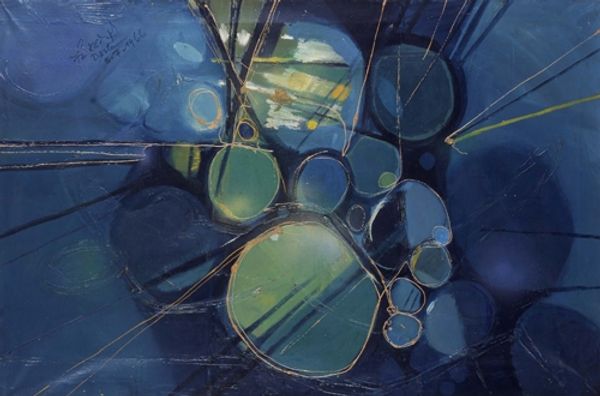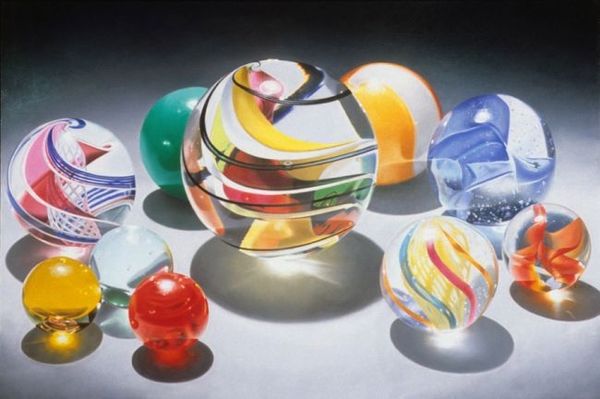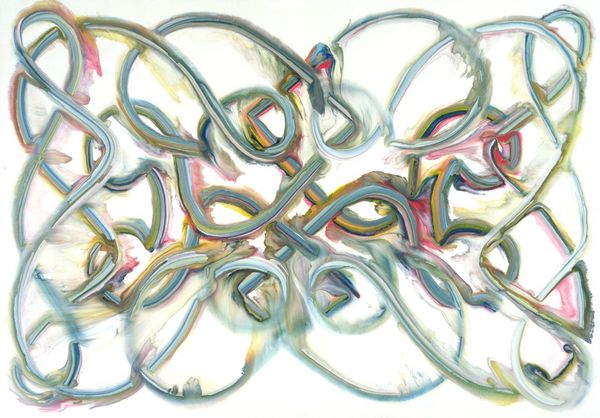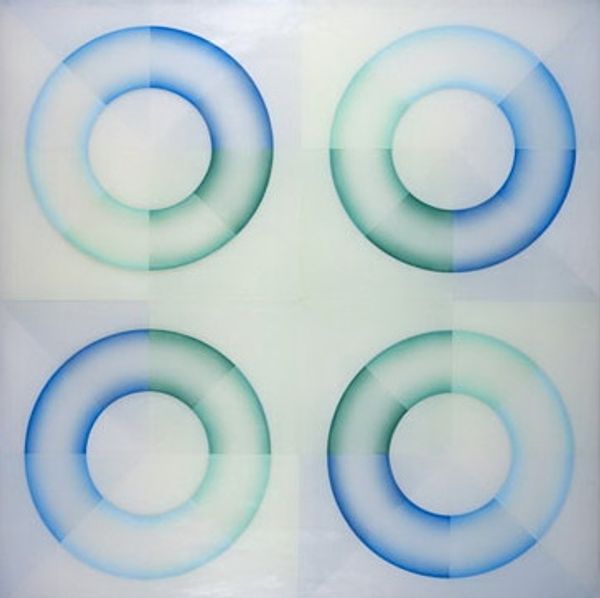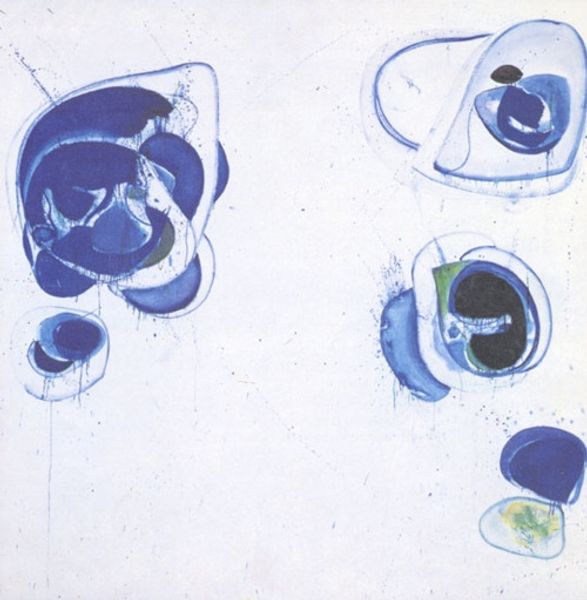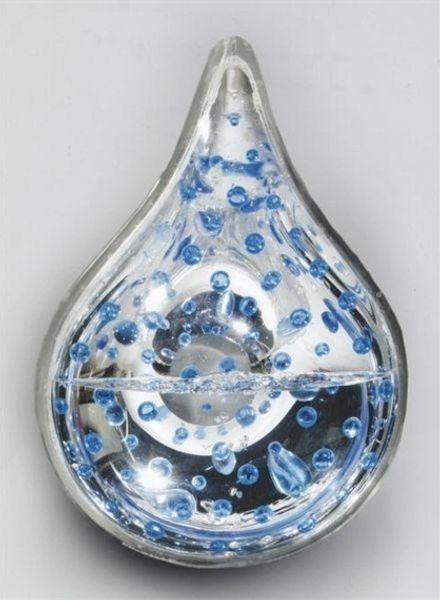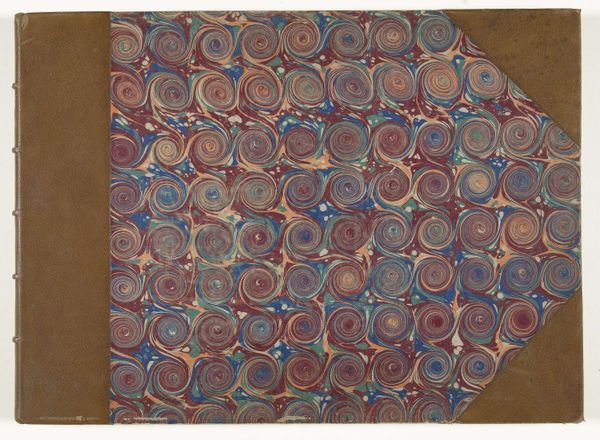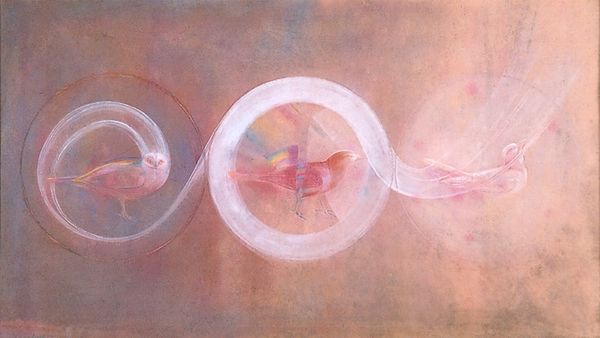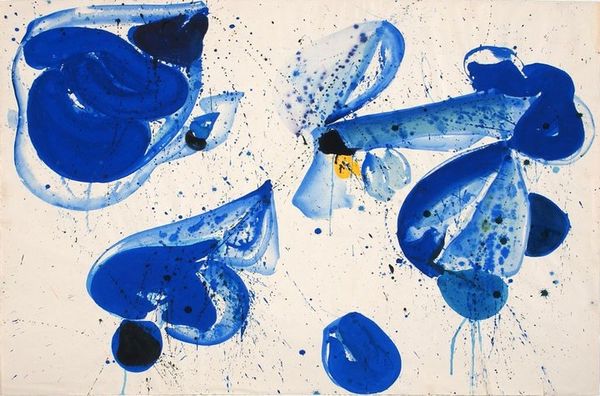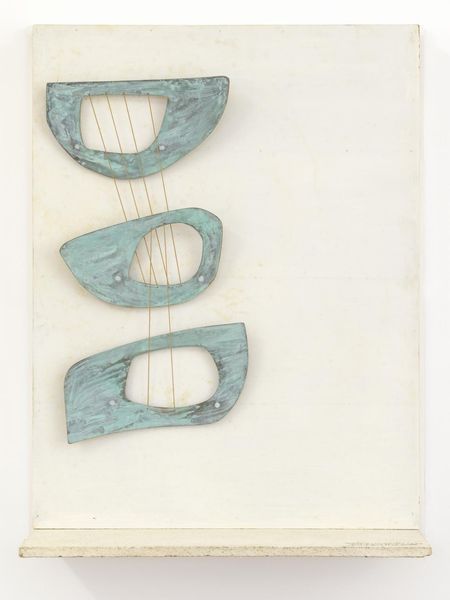
painting
#
contemporary
#
acrylic
#
painting
#
oil painting
#
geometric
#
watercolor
#
realism
Copyright: Charles Bell,Fair Use
Curator: Immediately, it feels like looking into a series of tiny universes! Kind of magical, right? Editor: Absolutely. And these tiny universes are rendered with an almost unbelievable hyperrealism. This is "Glassies, Marbles XIV," painted by Charles Bell in 1985. It’s a painting –acrylic or oil, the record’s unclear– that just stuns with its level of detail. Curator: Hyperrealism. Right. It's beyond taking your breath away! The way he's captured the light, the reflections within reflections. I almost feel like I can reach out and… clink them together. Editor: That commitment to verisimilitude places Bell very deliberately within a particular history of representation. Artists in postwar America pursued increasingly inventive strategies, aiming to respond critically to the pervasive power of photographic media by embracing—even exaggerating—its visual conventions. Curator: I guess in a way, that intense level of observation allows the ordinary to transform into something truly extraordinary. Marbles, childhood treasures... now, suddenly, they’re landscapes, dreams. Worlds within worlds. And the almost meditative light invites to you lose yourself in them. Editor: But why these specific objects? What associations did marbles hold for viewers in 1985? The turn to childhood as a site for aesthetic reflection signals a yearning for uncomplicated experience in a moment when contemporary visual culture felt newly complicated and potentially overwhelming. Curator: Perhaps their inherent simplicity is precisely what drew him in. As we get older, we layer on all this expectation and disappointment... But these marbles exist, they reflect, they absorb, almost indifferent to the narrative we’re busy constructing around them. In this simplicity is space for projection. Editor: In that case, the artistic genius on display here consists, in part, in cleverly reformatting these banal consumer products—marbles, gumball machines, diner signs, or other overlooked paraphernalia of everyday life—for consumption in very exclusive and powerful visual settings like museums and galleries. Curator: It seems to be less about celebrating consumerism and more about freezing a specific feeling, or even memory of the pre-digital days. Editor: Maybe both are right! Either way, this particular "Glassie" certainly seems to resonate through decades of socio-technological transformation.
Comments
No comments
Be the first to comment and join the conversation on the ultimate creative platform.
